Abstract
Chan Wirasinghe wanted to be a civil engineer from about Grade Six, and completed his first engineering degree at his birthplace, Sri Lanka. At the time, Sri Lanka had compulsory civil service, so although he did not take transportation courses as an undergraduate, he was recruited to work for two years at the Department of Highways, which germinated his interest in transportation engineering. An American Fulbright Scholarship supported his Masters and PhD studies at the University of California at Berkeley under the supervision of Dr. Gordon Newell. His research involved the application of mathematical analysis to model public transport systems. He then joined the University of Calgary as an Assistant Professor in Civil Engineering, pleased to be the third transportation professor on faculty there. His subsequent research included: further work in public transportation systems; optimizing the geometrical design of airports; and, response to natural disasters, particularly tsunamis and tornados, through the International Institute of Infrastructure Renewal and Reconstruction. He served as Dean of the Faculty of Engineering for 12 years, overseeing the renaming of the Faculty as the Schulich School of Engineering for a total matched donation of $50 million, then the largest donation to a Canadian engineering school. He also led initiatives to increase the number of women faculty members and woman students in the Faculty.
